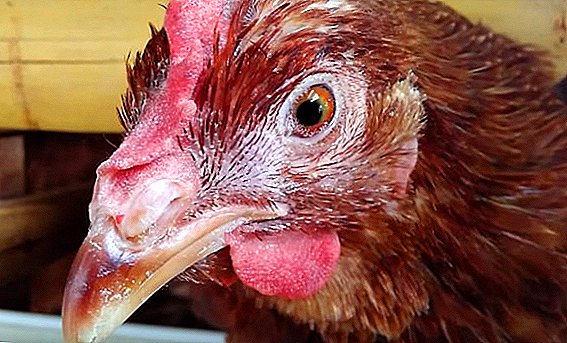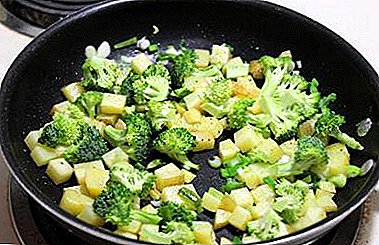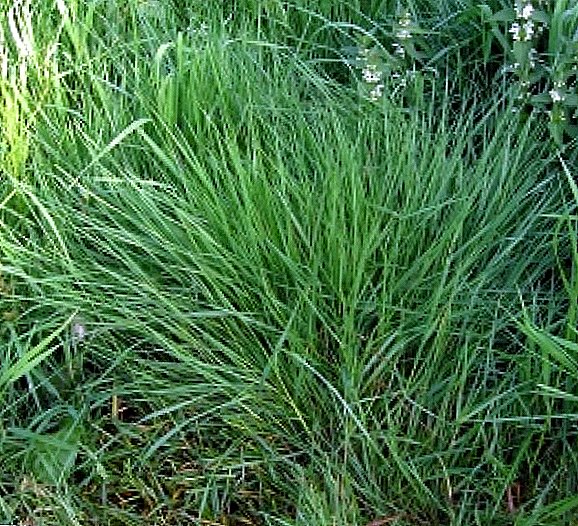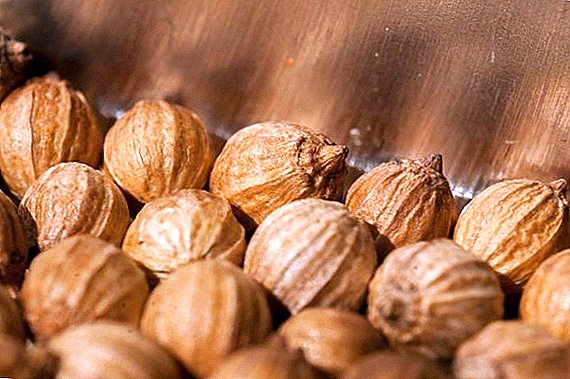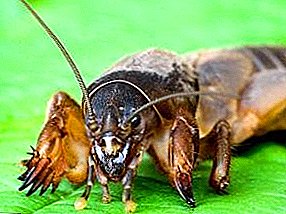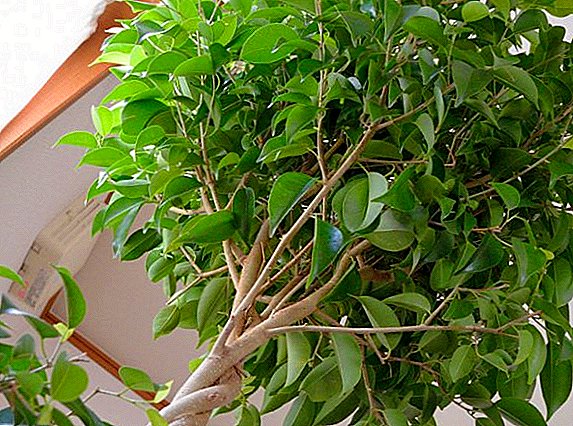 When purchasing a home ornamental plant, flower growers often opt for those who are not demanding to care, but who are able to decorate any interior. These plants include the ficus of Benjamin "Natasha." As a symbol of prosperity and home comfort among the Slavs, as well as a symbol of financial stability in the Taoist practice of feng shui, this plant is very popular and in demand in home floriculture.
When purchasing a home ornamental plant, flower growers often opt for those who are not demanding to care, but who are able to decorate any interior. These plants include the ficus of Benjamin "Natasha." As a symbol of prosperity and home comfort among the Slavs, as well as a symbol of financial stability in the Taoist practice of feng shui, this plant is very popular and in demand in home floriculture.
Botanical description and photo
Benjamin Ficus "Natasha" - an evergreen plant of the Mulberry family of the genus Ficus, which is a miniature variety of the Benjamin species. 
Botanical description of the tree:
- root system: highly developed, powerful, with the growth inside the pot and in the upper layers of the soil and a gradual elevation above it (invasive);
- trunk: narrow, branched, flexible, cylindrical, light brown color;
- Shoots: drooping, branched;
- leaves: alternate, smooth, with a glossy shine, curved along the central vein, pointed with smooth edges.
Ficus blooms occur only in the conditions of their natural growth, it is unlikely to achieve flowering at home, even experienced gardeners.
Did you know? Ficus species growing under natural conditions reach high sizes and are long-lived. Thanks to such qualities, tombs for the pharaohs were created from their wood in ancient Egypt.
How does the ficus
The biological form of the species is a miniature tree with a height of 30-100 cm with many small green leaves reaching a length of no more than 3 cm and forming a lush crown. Volumetric and strong axial trunk, as a rule, form several trunks of plants planted in one pot and intertwined with each other. The branchy shoots of a tree are small, but frequent, requiring systematic pruning and crown formation. 
The spread and birthplace of the plant
Ficus benjamin "Natasha" comes from the tropics. Its natural area of growth is North and East Africa, East Asian countries, Australia. The preferred area for growth - the coast or the foot of the mountains. Under natural conditions of temperate latitudes, it can also grow, but it is mainly a representative of indoor ornamental plants and, as such, is distributed throughout the world.
How to choose a plant when buying
A few tips when purchasing a form will help make the right choice:
- the barrel must not have any damage or fresh cuts;
- branches should not be leafless;
- there should not be any spots or signs of drying on the leaves;
- the lower part of the leaves should not talk about the presence of any pests;
- the soil should not be dry.
Appearance without signs of wilting indicate the health and the absence of pests, which is a guarantee of the right choice when buying. 
Where to place the ficus "Natasha"
Despite all the simplicity of the plant, for good growth and development after the acquisition it is important to properly arrange and provide him with comfortable conditions.
Lighting and location
A ficus is a light-loving plant, it is the sun that owes its glossy leaf surfaces. Southern, well-lit windows are suitable for placement in apartment conditions; such placement will save the tree from the curvature of the trunk, which can occur when there is a lack of light.
Important! Sun rays can burn leaves, so sunlight must be diffused.With this arrangement, the pot with the plant must be rotated more often for uniform photosynthesis and the development of the tree under sunlight.

Air humidity and temperature
As a representative of the tropics, the species prefers low air humidity. It perfectly tolerates short-term drought and does not tolerate overmoistening. Moderate humidity is provided by moistening a plant from a spray bottle or by watering under bath conditions. Temperature control also does not like extremes.
Read the rules of watering the ficus, and learn how to multiply ficus at home, and find out the reasons for poor growth of the ficus Benjamin.The optimum temperature for normal development ranges from 22 ° C to 25 ° C. In the winter season, the air temperature is not lower than 13ºС - the development of the plant in the winter season slows down, therefore low temperatures are not so destructive at this time for the ficus Benjamin Natasha.
Soil for the plant
Requirements for soil mixture in ficus small. The soil should be of mixed type in a ratio of 2 parts of sod (or leaf) to 1 part of sand. A ready-made mixture is sold in garden stores, but a universal soil for indoor plants is also suitable for cultivation. 
Did you know? According to some beliefs, the ficus promotes fertility in women. For this reason, in India there is a day of worship of women to this plant - Wat Savitri Gate.
Ficus benjamin "Natasha": care at home
Growing ficus Benjamin "Natasha" does not require special skills, but to ensure optimal conditions for growth, you must be familiar with the basic rules for the care of him.
Learn more about the varieties of rubber ficus, the characteristics of its cultivation, diseases.
These rules include:
- watering rules;
- timely fertilizer, pruning and transplanting.
Watering rules
The main requirement for watering is timely and moderate soil moistening. Exact time for irrigation is difficult to predict - the rate of moisture consumption depends on growing conditions such as humidity and air temperature in the room. Watering is carried out when 1 cm of the top layer of the earth is completely dry. At the same time the water should be warm and defended.  It is necessary to spill the soil thoroughly, but after 30 minutes after the procedure, excess liquid that has drained into the lower container of the pot must be drained. Monthly warm shower will not be superfluous for the view. You can carry it out in the bathroom, while the ground must be covered to avoid over-wetting the soil. Such a procedure will not only moisturize the plant, but also help get rid of dust that has settled on the glossy surface of the leaves.
It is necessary to spill the soil thoroughly, but after 30 minutes after the procedure, excess liquid that has drained into the lower container of the pot must be drained. Monthly warm shower will not be superfluous for the view. You can carry it out in the bathroom, while the ground must be covered to avoid over-wetting the soil. Such a procedure will not only moisturize the plant, but also help get rid of dust that has settled on the glossy surface of the leaves.
Important! For people with sensitive skin and allergies, Benjamin's ficus "Natasha" may provoke allergic reactions in contact with the plant's milky sap (both external and internal).
Fertilizer
Benjamin "Natasha" Ficus at home does not have a rapid and active growth. To support the plant and accelerate the development can timely feeding fertilizer. For this purpose, any liquid water-soluble fertilizer for palm trees and ficus, such as "Palm", "Kemira", "Humisol", "Rainbow" and other fertilizers like these are suitable.
Read also about how to grow Ficus Benjamin and Mikrokarpa.Fertilizers should be applied during their active development - in the spring and summer seasons, once every two weeks. The solution should be prepared according to the pasted instructions, but, when applying fertilizer for the first time, the dose should be significantly reduced. This is necessary to control the reaction of the ficus.

Pruning
Regular pruning is an important element for the Benjamin type "Natasha". Due to timely pruning, asleep buds are stimulated for growing season, the crown of the tree is formed and its pomp increases.
There are different types of ficuses - read them.
Crop prone to:
- lower young shoots grown on the trunk;
- branches with a very small amount of side shoots and leaves;
- young upper shoots of branches without lateral shoots or with a small number of them;
- dying branches, dropping foliage;
- broken or defective branches.
Did you know? Ficus leaves can absorb heavy metals from the soil, and from the air - hazardous compounds of formaldehyde, ammonia, toluene, xylene and other compounds."
Video: pruning ficus grade Natasha
Transfer
A plant is transplanted once every 1-3 years. The transplant period depends on the initial volume of the flowerpot and the speed of development of the plant. Young plants develop quickly, so transplantation is best done annually. Vegetation and growth of mature plants occur slowly, which means the need for transplantation 1 every 2-3 years. In any case, the annual update of the upper layer of the soil will not be harmful.
Important! Ficus benjamina "Natasha" does not tolerate temperature drops and drafts in the room.Transplant requires adherence to certain rules and has a certain sequence:
- transplantation is necessary during the period of active development of the plant - in spring or summer. Transplanting in the winter season is not recommended, because the plant is at rest and has no strength to learn new volumes;
- the diameter of the pot should be 2-3 cm larger than the previous one. This rule is explained by the fact that in an excessively large bitter all the forces of the plant will go to the development of the root system, and in an excessively small one - the development will be extremely slow;
- the day before transplanting, the tree needs to be watered so that the earthen room during the transshipment remains intact;
- Before transplanting it is necessary to prepare a new pot. For this, a layer of expanded clay is poured at its bottom as a drainage. A layer of soil is poured on the claydite above, which needs to be slightly compacted;
- it is necessary to remove the plant from the old pot, trying not to destroy the earthen clod, after which it is important to remove the upper and lower layers of the soil, and to over-grow the roots a little;
- The prepared plant should be placed in a new pot, sprinkling all voids with soil and carefully compact the layers;
- moisten the soil with a small amount of water with the addition of a scavenger, such as "Gilea" or "Kornevin". If used for planting purchased soil in plastic bags, then watering after planting is not necessary. This soil already contains a small amount of moisture.
Repot the ficus at home, and pick up the soil for it.
Video: transfer Timely transplantation in compliance with the rules will give a new growth to the ficus of Benjamin "Natasha."
How to propagate ficus
The easiest and fastest way to breed ficus is grafting. A suitable time for breeding - spring and summer, this period is well combined with the process of pruning and the formation of the crown. Young side shoots are suitable as a cutting, preferably with a well-developed axial stem. The optimal size of the cutting is from 10 to 12 cm. After pruning, the stalk must be placed in a container with a small amount of water, and it is important that the milky juice that is released dissolves well in water, freeing the slice for root germination.
Important! When ensuring greenhouse conditions, it is important to monitor the moderation of watering the plant.Water after the dissolution of the milky juice must be replaced with fresh. After 2-3 weeks, the stalk forms the first roots, which foreshadows planting in the prepared soil from a mixture of turf soil and sand in a 1: 1 ratio. After planting the stalk should be moistened with a small amount of water with the addition of any constrictor. To speed up the rooting process, a glass jar can be put on the pot with a handle to create greenhouse conditions.
Video: how to quickly and easily propagate the ficus
Diseases and pests of the plant
Loss of decorative appearance, namely yellowing and falling leaves, may indicate improper care of the plant or the presence of pests on it. Possible causes of deficiencies:
- the lack of light leads to discoloration of the leaves, which requires changing the place of the pot to a more illuminated one;
- brown spots and deformation of the leaves indicate sunburn and require shading;
- Drying tips of the leaves indicate a lack of watering; a dry topsoil will also tell. Unfortunately, by resuming watering, the leaves will not be able to return to their former appearance, but this will help to avoid the appearance of new defects;
- deformation and wilting indicate excessively low air temperature in the room;
- a change in temperature and location after purchase can also lead to short-term wilting and shedding of leaves; after acclimatization, all development processes are restored.
Did you know? Ficus leaves in the process of photosynthesis produce glucose (sugar), therefore, when growth is reduced, it is worthwhile to infrequent watering with sweetened water per 0.25 l of liquid 10 g of sugar.The ficus of Benjamin "Natasha" is ill rarely. The disease leading to his death is root rot. Frequent and excessive watering leads to its appearance, causing stagnation of soil moisture and rotting of the root system. Manifestations of the disease are also yellowing and leaf fall. Eliminating the disease is quite simple - it is necessary to completely rid the root system of such an earthy coma, cut off all the rotten roots and transplant the tree into a new pot with the prepared soil.

Among the pests that damage the tree, can be identified:
- Aphid - the use of contaminated land, the proximity to a diseased plant, or the location of a flower outdoors in the summer season can be the cause of its appearance;
- mealybug - eat the sap of the plant, leading to its death;
- spider mite - also feeds on plant sap and leads to death.
The ideal conditions for the appearance of pests are dry and hot weather or dry air in a hot room. For pest control, there are many universal preparations of insecticides: "Akarin", "Karbofos", "Fitoverm" and others. Rules for their use are described on the packaging, and the effect after treatment is achieved after the first application.
Lyric ficus - very interesting.Ficus benjamin "Natasha" - a miniature houseplant with a compact crown. This type of ficus is an unpretentious plant, but it requires compliance with certain conditions for development - moderate watering, maximum illumination without direct sunlight, timely pruning and periodic transplanting. Compliance with these simple processes guarantees the Ficus rapid growth, decorative appearance and the absence of diseases or pests.
Feedback from network users




